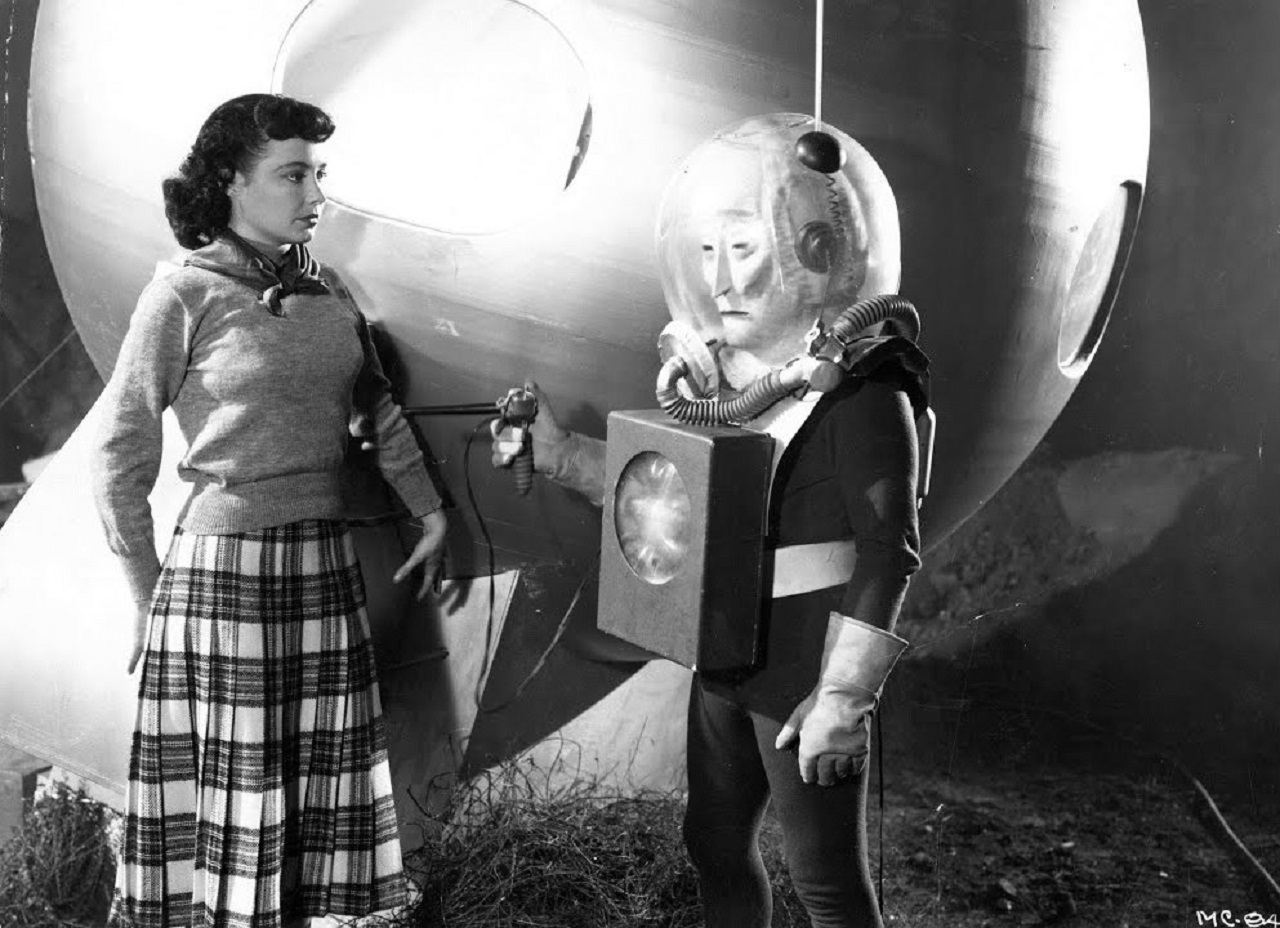USA. 1951.
Crew
Director – Edgar G. Ulmer, Screenplay/Producers – Jack Pollexfen & Aubrey Wisberg, Photography (b&w) – John L. Russell, Music – Charles Koff, Photographic Effects – Jack Glass, Art Direction – Angelo Scibetta & Byron Vreeland. Production Company – Mid Century Films.
Cast
Robert Clarke (John Lawrence), Margaret Field (Enid Elliott), Raymond Bond (Professor John Elliott), William Schallert (Dr Mears), Roy Engel (Constable Tommy)
Plot
American journalist John Lawrence is invited to join astronomer John Elliott at his observatory on a remote island off the Scottish coast where Elliott is monitoring a passing planet that he has named X. There Lawrence becomes interested in Elliott’s daughter Enid. They then see a spaceship come down on the moors. Out of the spaceship emerges a small green-skinned alien visitor. The alien appears cautiously friendly, until Elliott’s disreputable and greedy assistant Mears tortures it to get the secrets of the tough, ultra-light metal its craft is constructed from.
The Man from Planet X is one of the lesser-known science-fiction films from the 1950s. It is not a classic that stands up there with other giants like The War of the Worlds (1953), Forbidden Planet (1956) or Invasion of the Body Snatchers (1956), but is a minor entry and not unworthwhile.
The Man from Planet X was made by Edgar G. Ulmer (1904-72), a B-budget director who had emigrated from Austria. Ulmer made a number of genre films and attained a brief cult in the 1960s on the basis of The Black Cat (1934) and the film noir thriller Detour (1944). Ulmer never attained the status on a studio list that ever deserved his cult. (See below for Edgar G. Ulmer’s other genre films).
The Man from Planet X has certainly been made on a B-budget. The moor where most of the film takes place consists of obviously painted backdrops, while the Scottish village is simply a painting of a line of houses. (The film was in fact shot at Hal Roach Studios using leftover sets from the Ingrid Bergman version of Joan of Arc (1948). The whole film had a budget of $40,000, which was quite low even in the 1950s).

However, Ulmer disguises this by drenching everything in perpetual mist and dimmming the lighting so that the entire film seems to be taking place at night – and in doing so achieves a reasonable degree of atmosphere. The initial appearance of the alien as a face suddenly staring back out of the capsule is a good shock effect. Its first appearance to the humans, gasping for air and in obvious need of help, holds an intriguing ambiguity. This is especially noticeable when compared to other 1950s science-fiction films where the alien is almost always a demonstrative threat, not a helpless frail creature. The alien, which appears like a child with an aged and very solemn face, is well designed.
What is interesting is how The Man from Planet X was an early entry in the 1950s alien invader genre and was made before the two landmarks of the genre – The Thing from Another World (1951) and The War of the Worlds, which essentially defined the alien as unreasoning and hostile. Although the alien here does become belligerent and the last half of the film goes in classic alien invader directions with the military coming to take it on, it is entirely possible up to at least the halfway point to interpret the alien as benevolent. In fact, in terms of the underlying threat, The Man from Planet X is as much a parable about human greed as it is about the potential dangers that the universe holds. This is also very briefly the first alien invader film to touch upon the theme of aliens controlling human minds that would later become one of the major themes of 50s science-fiction.
This is one 1950s SF film that has never been remade, although the alien creature would later make an hilarious cameo appearance in Joe Dante’s Looney Tunes: Back in Action (2003).
Edgar G. Ulmer’s other genre films include:- The Black Cat (1934), Daughter of Dr. Jekyll (1957), The Amazing Transparent Man (1960), Beyond the Time Barrier (1960) and The Lost Kingdom/Journey Beneath the Desert (1961).
Trailer here


